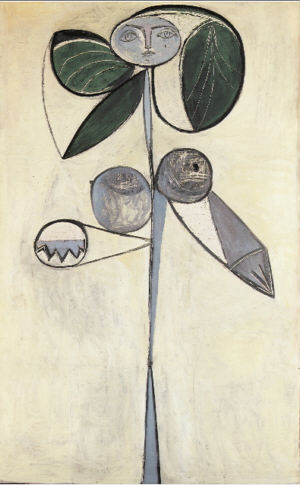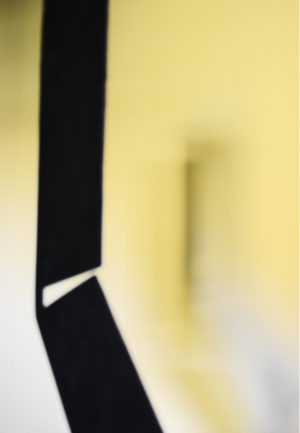Posted by Steve Durbin on March 22nd, 2010
This is about one of those laboratory experiments that just beg for word play in the article title. I resist. Perhaps it helps to be months removed from the publication date of the latest results; the bookmark would have been long since forgotten, except that I boldly left it at the top level of my bookmarks, where it reminded me daily of how much further behind I was falling.
Shigeru Watanabe has shown that pigeons can be taught not only to tell Monet from Picasso (PDF), but also to make seemingly more elusive distinctions, such as “good” art from “bad”. As reported in Science Daily:
more… »
Posted by Steve Durbin on March 16th, 2010
In Praise of Trees is the name of my show with printmaker Kerry Corcoran, which opened about a week ago at the Bozeman Public Library. The Atrium Gallery is essentially the combined entrance halls from two sides of the new (environmentally-certified) building, resulting in a broad, L-shaped space intended for exhibitions. It does get lots of traffic, though much of it under 12 years old. We applied and were accepted over a year ago.

more… »
Posted by Steve Durbin on June 30th, 2009
 1
1
I occasionally worry that my tendency to analyze—some might call that an understatement—could be a negative influence on my work, causing me to lose spontaneity or fall into one rut or another. But I’ve now proven to my satisfaction that any effect is both unconscious and ineffective. Here’s how it happened.
more… »
Posted by Steve Durbin on June 25th, 2009

Even if you don’t care greatly about Picasso, I recommend the Charlie Rose interview with Françoise Gilot, who lived ten years with the man. A talented artist herself, and very independent-minded, Gilot frequently discussed art with Picasso. Much of what he said about how he worked has come to us through her. For example, regarding the rather complex, high cubist paintings, he said than in the “early stages” there were almost no “references to natural forms…I painted them in afterwards.” Braque had a similar working procedure. Rather than abstract from an initial representation of a scene, these cubists–at least for a time as their approach evolved–roughly laid out their abstract, faceted spaces and forms, then filled in enough clues to suggest the subject. Those clues could appear in rather disconnected spots. I believe it was the dealer Kahnweiler who said they had developed a way to free objects, showing that they existed without showing where they were located.
more… »
Posted by Steve Durbin on June 17th, 2009
How do we actually look at pictures, and how does that affect what we see in them? I started thinking about this again when I read about the Kuuk Thaayorre, an Aboriginal society in northern Australia. Lera Boroditsky (mentioned previously on A&P) reports on The Edge that their language and culture describe space and spatial relationships not in body-relative terms, but in absolute, land-fixed terms (I wonder if this is true for many Aboriginal langiages). When given a sequence of picture cards (showing a banana being eaten, or other obvious process) to arrange in time order,
Instead of arranging time from left to right, they arranged it from east to west. That is, when they were seated facing south, the cards went left to right. When they faced north, the cards went from right to left. When they faced east, the cards came toward the body and so on. This was true even though we never told any of our subjects which direction they faced. The Kuuk Thaayorre not only knew that already (usually much better than I did), but they also spontaneously used this spatial orientation to construct their representations of time.
more… »
Posted by Steve Durbin on June 8th, 2009

Jerry Rankin is a Montana artist who seems able to come up with completely new ideas in every project he undertakes. Only a few of these from his career are available on his web site. Recently he created two sculptures, variants of a theme, that have no precedent in anything he’s done before. Of thin, flat, black steel, they are very simple in design, being straight-edged boomerang-like shapes with one or two slots, respectively, cut into them. Yet they are intriguingly rich in perceptual surprises. I had the opportunity to borrow the cardboard maquettes, thinking I might try to illustrate these effects. Instead, I discovered an unforeseen aspect of how these objects relate to their surroundings.
more… »
Posted by Steve Durbin on June 1st, 2009
 1
1
My day in Yellowstone last month was a long and varied one (see previous posts one, two, three). As I was leaving the park along the Madison river (almost the longest in the U.S.), I stopped occasionally to photograph the line of mountains on the opposite side of the valley.
 2
2
As I was doing this, I had in mind the images from the month before of the landscape by Tepee Creek (post here). I was hoping to catch some of the rhythm, perhaps even musicality, that I found in both places. I’ve nurtured such a poetic and mostly unrealized hope since I read about photographer Michael Smith’s epiphany with sonograms, like the one below of a hermit thrush. Smith was inspired by the beauty of such sonograms in creating some of his wide landscapes. (Though it’s worth pointing out that Smith’s wife, Paula Chamlee, in her own way, succeeded as well or better.)

more… »

 1
1

 1
1 2
2